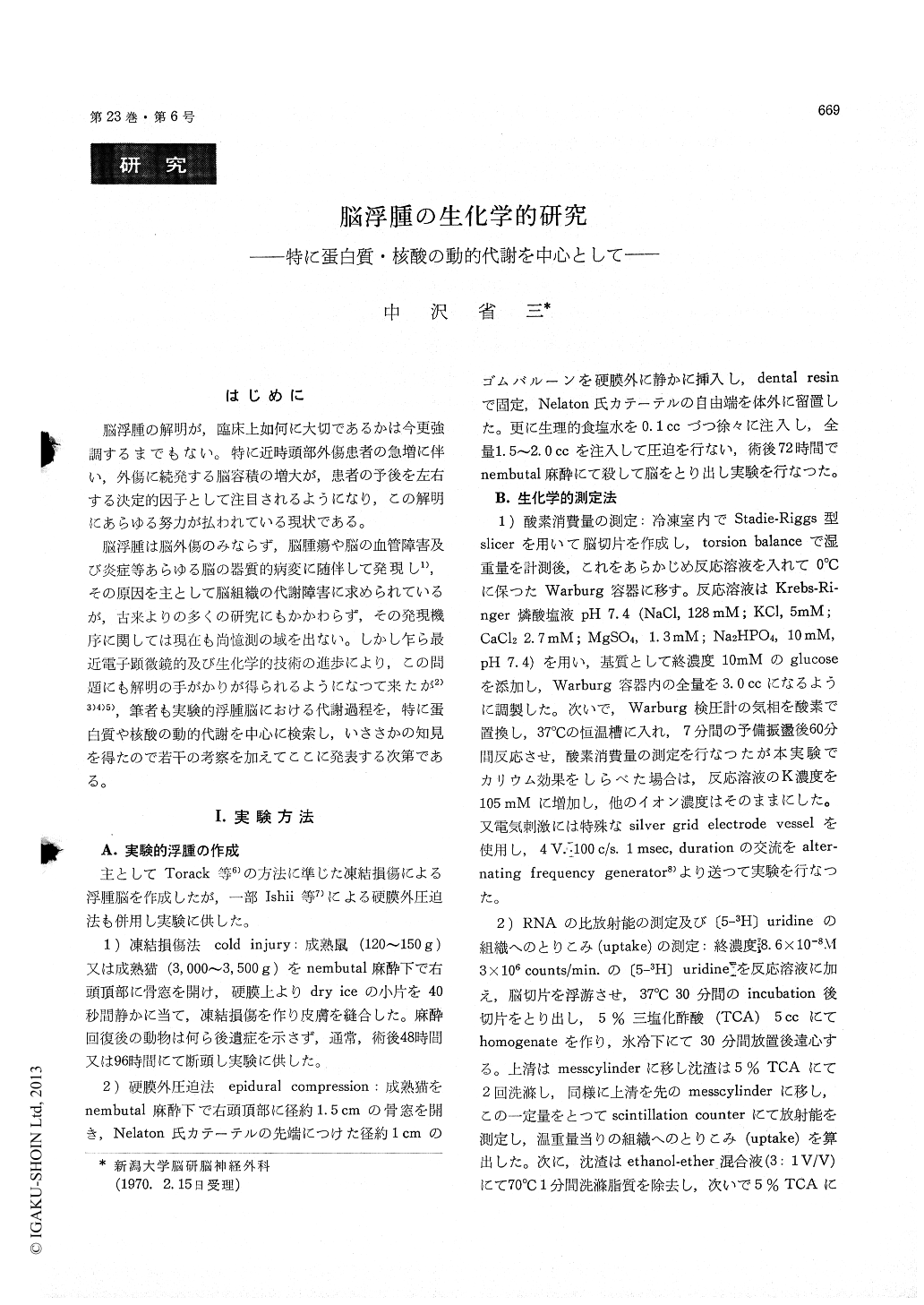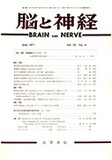Japanese
English
- 有料閲覧
- Abstract 文献概要
- 1ページ目 Look Inside
はじめに
脳浮腫の解明が,臨床上如何に大切であるかは今更強調するまでもない。特に近時頭部外傷患者の急増に伴い,外傷に続発する脳容積の増大が,患者の予後を左右する決定的因子として注目されるようになり,この解明にあらゆる努力が払われている現状である。
脳浮腫は脳外傷のみならず,脳腫瘍や脳の血管障害及び炎症等あらゆる脳の器質的病変に随伴して発現し1),その原因を主として脳組織の代謝障害に求められているが,古来よりの多くの研究にもかかわらず,その発現機序に関しては現在も尚憶測の域を出ない。しかし乍ら最近電子顕微鏡的及び生化学的技術の進歩により,この問題にも解明の手がかりが得られるようになつて来たが2)3)4)5),筆者も実験的浮腫脳における代謝過程を,特に蛋白質や核酸の動的代謝を中心に検索し,いささかの知見を得たので若干の考察を加えてここに発表する次第である。
Cerebral edema was produced in rats and cats by freeze treatment or implanted balloons and metabolic activity has been studied. There observed an in-crease in water and sodium and a decrease in potas-sium content of the white matter resulting in a sharp rise of Na/K ratio. Radioactive amino acid incorporation into the protein of edematous brain is increased markedly after the production of edema. [5-3H] uridine incorporation into RNA is also in-creased in this condition.
There is a decrease in respriratory response to cationic and electrical stimulation and there is a diminution of CO2 formation from GABA by elec-trical stimulation.
Amino acid transport of the brain slices is de-creased slightly by production of edema. On the other hand, [5-3H] uridine uptake in slices, Na-K ATPase activities and GDC, SDH, MAO activities are not affected in this condition. These findings are discussed in relation to other aspects of meta-bolic activity.

Copyright © 1971, Igaku-Shoin Ltd. All rights reserved.


